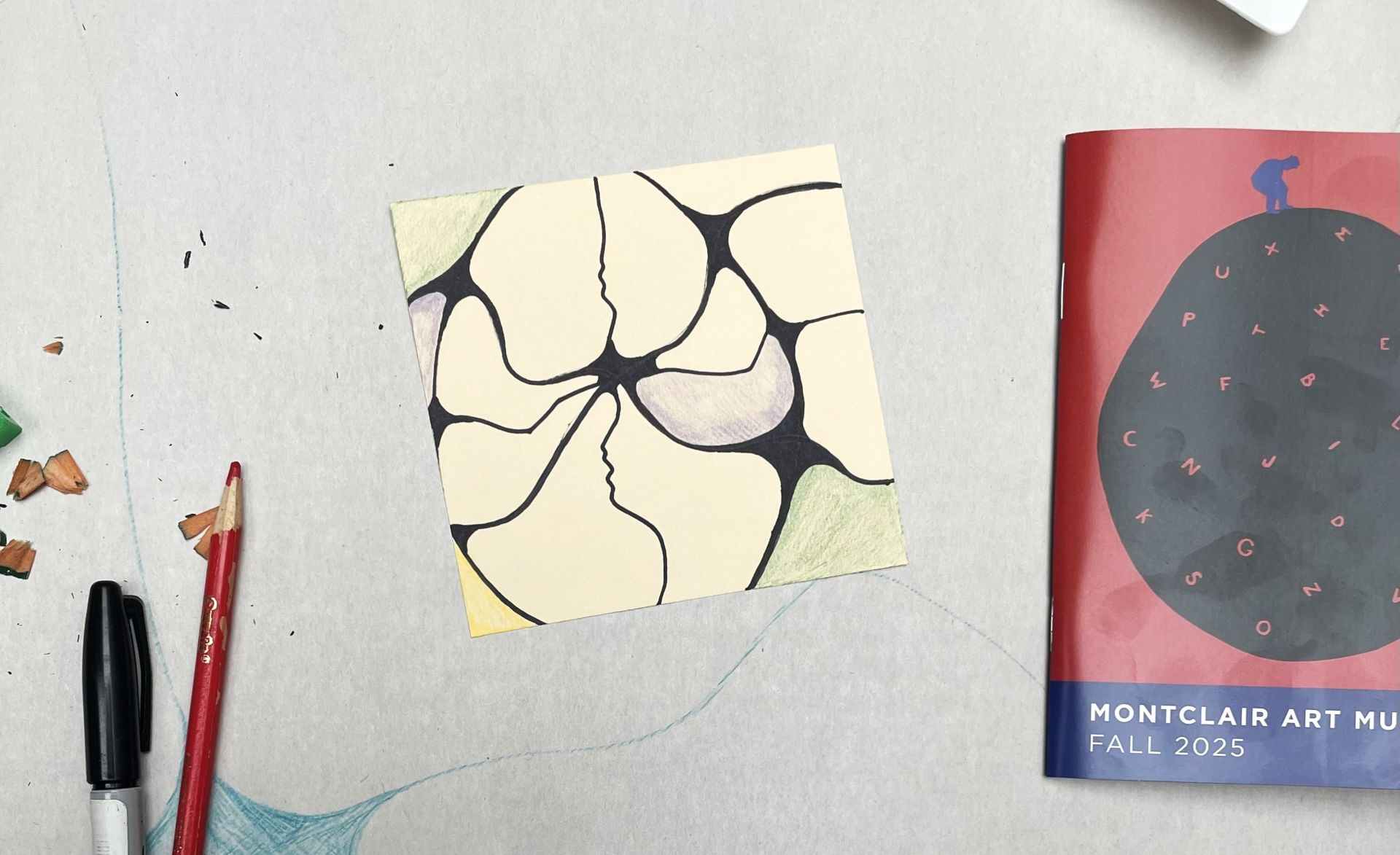This fall, our team was on the move: listening, learning, and sharing ideas at gatherings where the arts, health, and aging worlds are beginning to sound like one big, creative chorus. From New Jersey to Texas to California, one question echoed everywhere:
“How do we move all this research and energy into real-world practice?”
The ideas and strategies to this question are explored below. Take a look at what’s happening across the field and what we’re learning from the voices leading this work.
Creating Healthy Communities Convening — New Jersey Performing Arts Center (NJPAC)
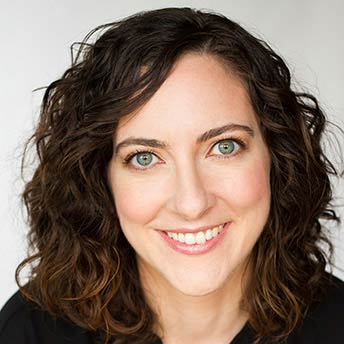
Takeaways from
Julie Kline, Director of Program Strategy
“It [the science] made me wonder, how do we demonstrate that creative aging reduces the effects of stress on the body?”
At the NJPAC‘s Creating Healthy Communities: Arts in Public Health Convening, the vibe was clear: creativity isn’t just good for the soul—it’s good for your health. “It was really good to get to know this world,” said Julie. The room buzzed with researchers, doctors, and artists exploring how art fits into health and wellness.
The science was fascinating. Researchers talked about telomeres, the protective tips on our DNA that shorten with age and stress. Creative engagement, they said, might actually slow that process. “It made me wonder, how do we demonstrate that creative aging reduces the effects of stress on the body?” Julie shared.
The takeaway? Science is syncing up to what artists have voiced all along: creativity is a stress reliever, a mood booster, and a real pathway to better health.
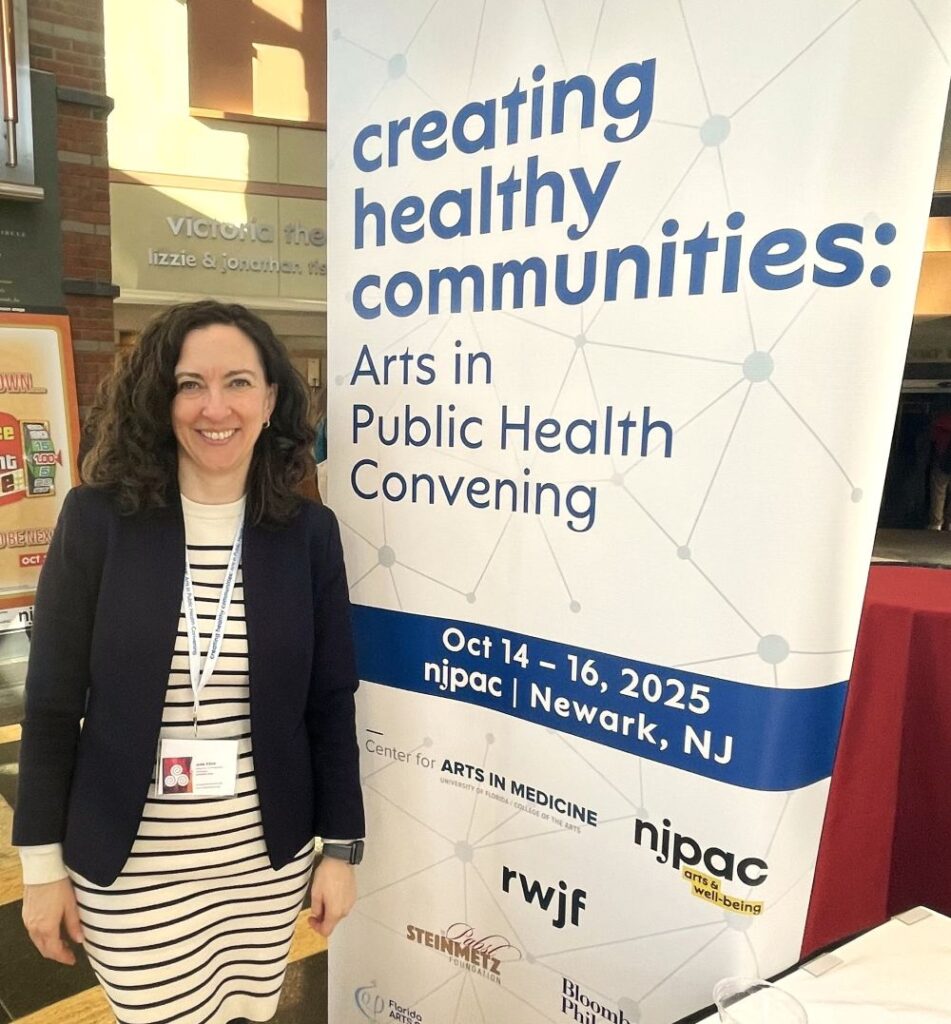
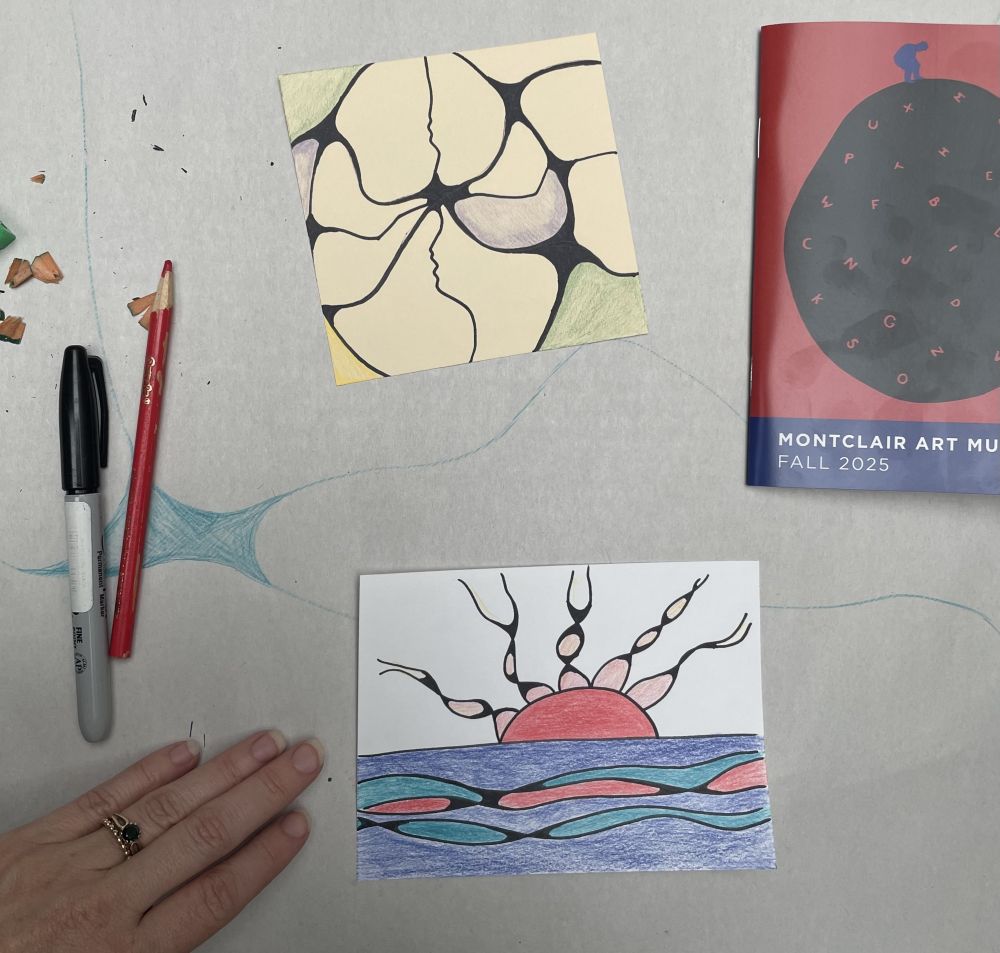
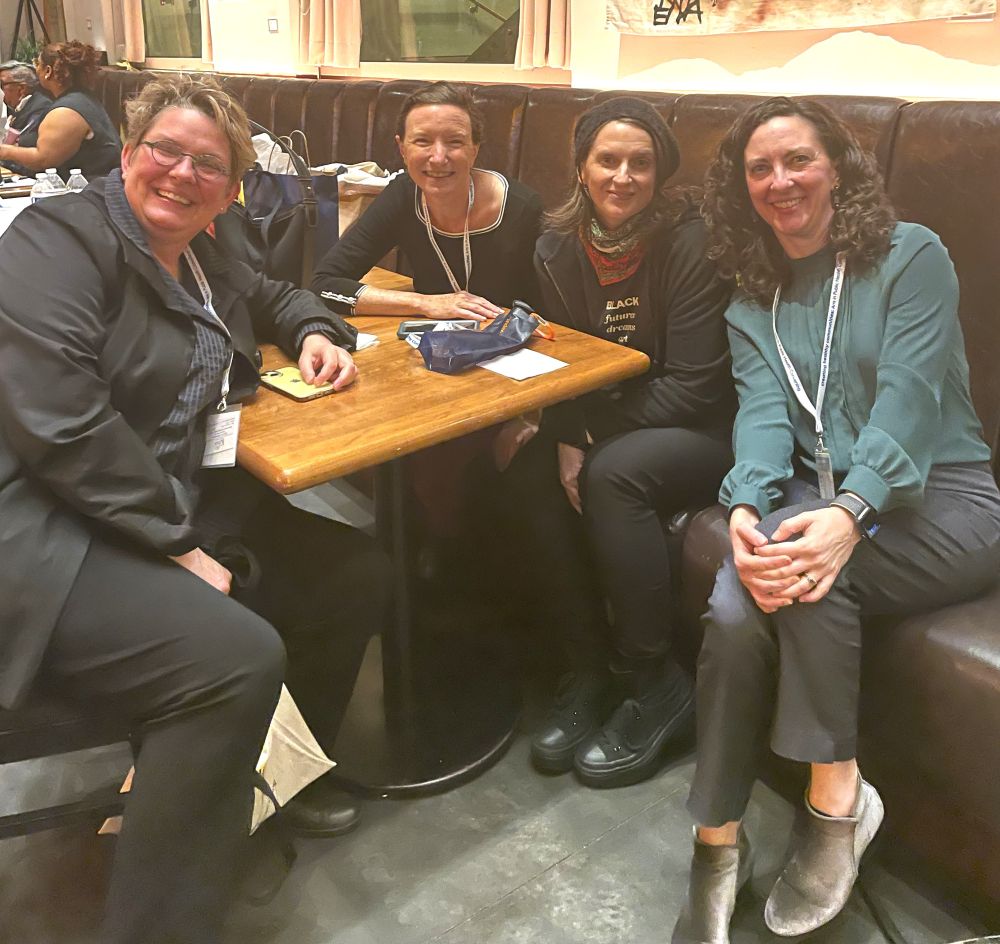
UNGA Healing Arts Symposium (NYU) + Bridging and Strengthening Community, Care, and Culture in the Bronx (New York City)
Takeaways from Nathan Majoros,
Director of Consulting and Capacity Building
“They [panelists] were looking at health holistically—community, food, nutrition—and asking how the arts intersect.”

At NYU’s Healing Arts Symposium, researchers shared new data showing how creativity supports health—but one quote summed it up: “There’s enough research,” said an attendee from Mount Sinai. “How do we move this into policy and practice?”
That question hit home for Lifetime Arts, as we’re all about taking great research and helping people put it into practice. “I keep coming back to how we recognize what’s already happening in the community,” Heather added.
Heather also highlighted Healing Arts New York, a network mapping arts-and-health events citywide. Anyone hosting an event can register it at HealingArtsNewYork.org/Register-Your-Event to grow visibility for this work. At the Bridging and Strengthening Community, Care, and Culture panel in the Bronx, Nathan and Julie saw those ideas in action. “They were looking at health holistically—community, food, nutrition—and asking how the arts intersect,” Nathan said. Clinics like Urban Health Plan are already proving it, using arts-on-prescription to support mental health and well-being.
Grantmakers in Aging (GIA) Conference (California)
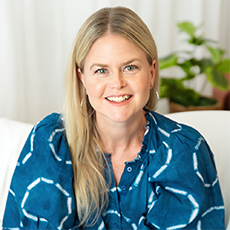
Takeaways from
Heather Ikemire, Executive Director
“They [funders and practitioners] were recognizing that older adults shouldn’t just inform advocacy efforts; they should be out front, leading the way.”
At the Grantmakers in Aging (GIA) conference, funders and practitioners came together to talk about collaboration and shared advocacy.
One key theme: older adults shouldn’t just inform advocacy efforts—they should lead them. “They were recognizing that older adults shouldn’t just inform advocacy efforts; they should be out front, leading the way,” Heather shared.
The funding conversation was equally candid. “There’s very little money in aging philanthropy,” she said, “so their main thing is how do we come together and collaboratively fund?” The big takeaway: collaboration isn’t optional; it’s essential.

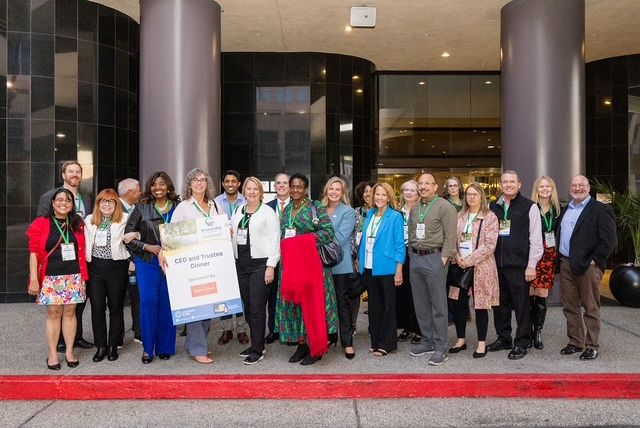
Seeds of Connection Conference — Foundation for Social Connection (Georgia)
Takeaways from
Liza Cucco, Director of External Affairs
“From urban planners to social workers to academics; everyone was demonstrating the impactful role that social connectedness plays in our well-being, at every stage of life.”

At the Foundation for Social Connections’ Seeds of Connection conference, everything centered on one theme; how relationships shape health.
“There were so many different perspectives,” Liza said. “From urban planners to social workers to academics. Everyone was demonstrating the impactful role that social connectedness plays in our well-being, at every stage of life.”
She pointed to The Roadmap: Reimagining Infrastructure to Improve Social Capital, which links social connection not only to happiness, but also to economic mobility. “They’re creating shared markers with institutions like the World Health Organization,” she noted.
Western Summit on Health Equity for Older Adults — Hogg Foundation for Mental Health (Texas)

Takeaways from
Heather Ikemire, Executive Director
“If you go into the community, the community will tell you what’s working. You don’t have to invent something new, you can learn from what’s already showing results.”
Heather joined the Western Summit on Health Equity for Older Adults as the only participant representing the arts—and her perspective struck a chord.
“A lot of folks just hadn’t connected yet with what’s already happening in communities,” she said. “Their experience with community-based research, like the Gene Cohen model, is still growing.”
When she shared examples of creative aging programs around the country, the room lit up. “If you go into the community, the community will tell you what’s working,” she told them. “You don’t have to invent something new, you can learn from what’s already showing results.”
It was a lightbulb moment: the arts are already building the bridge between research and real life.
“Seniors in Place” Virtual Webinar — Placemaking US (International)
Takeaways from
Gahlia Eden, Training and Network Manager
“They [Maine Arts Commission] made the connection between creative aging and city design, and that’s not a link people make often, but it should be.”
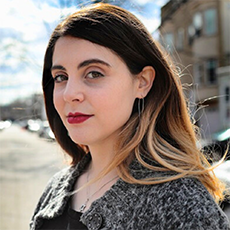
This international webinar from Placemaking US brought together urban planners, cultural leaders, and public health pros to reimagine age-friendly cities—with creativity at the heart of it.
“There was a lot of emphasis on social and cultural connection being essential for age-friendly cities,” shared Gahlia.
She pointed to inspiring examples: “In Costa Rica, they give money directly to older adults to plan and lead projects,” she said. “And in Ireland, older adults conduct their own accessibility audits.”
Her favorite takeaway came from the Maine Arts Commission, which tied creative aging directly to placemaking. “They made the connection between creative aging and city design—and that’s not a link people make often, but it should be.”
Looking Ahead: Moving Research into Practice
Across every event, whether focused on health, funding, planning, or creativity, one message kept coming through: we already know the arts support health and well-being. The time has come to act on it.
As Heather put it, “We don’t have to fit the health box. We can help the health box realize the power of our box.”
From the local to the global level, creativity isn’t just an add-on to aging—it’s a core ingredient in healthy, connected communities. The research is concrete, the ideas are flowing, and the momentum is here.
Now, it’s time to move it into practice—together.
Audiences
Arts and Community Orgnizations, Museums, Senior Centers
Year
Fields
Aging Services, Arts Agency (formerly Arts Council), Arts Organization, Community Center, Educational Institution (formerly Academic Institution), Government Agency, Government Agency > Federal, Government Agency > Local, Government Agency > State, Health, Housing, Museum, Philanthropy (Formerly Foundation), Service Organization
Focuses
Accessibility, Advocacy, Arts + Health
Services
Convening, Partnerships, Presenting

